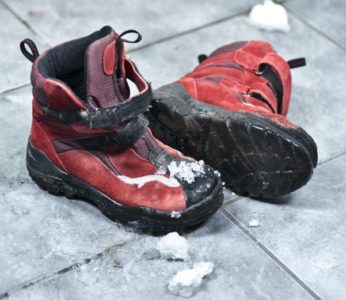 Just because winter boots are expensive doesn’t mean they are great on ice. In fact, the vast majority of boots aren’t great on ice, according to a new study out of Canada.
Just because winter boots are expensive doesn’t mean they are great on ice. In fact, the vast majority of boots aren’t great on ice, according to a new study out of Canada.
In an effort to understand how boots performed on ice and which ones can help prevent foot, ankle and slip-and-fall injuries, researchers at the University Health Network in Toronto put a number of boots to the test. Researchers tested 98 different types of winter footwear to see if they met the minimum slip-resistance standards set out by the Maximum Achievable Angle (MAA) Testing Method.
Researchers tested the footwear on real subjects to get a better determination of whether or not the boots passed the MAA test. Participants were asked to walk in the boots in a simulated winter environment, testing slip-resistance when standing, walking up and walking down flat and slanted areas covered in either bare ice or melting ice. Each shoe was then given a grade based on its performance in the study.
Slip Resistant Boot Grades
You can see the grades of each boot by clicking here, but we can sum up the results rather quickly. In short, the vast majority of boots did not pass the MAA test. According to the results, only eight percent of the boots tested passed the MAA assessment.
Although a number of the boots failed the test, there are still good slip-resistant boots on the market. The Sperry Men’s Cold Bay Vibram Artic Grip Boot received the highest score in the MAA test, and other boots like the Sperry Women’s Powder Valley Vibram Artic Grip Boot and the Caterpillar Stiction Hiker Ice+Waterproof TX Boot also received high grades. You can see more high graded slip-resistant boots here.
According to researchers, an estimated 20,000 people in Ontario head to the emergency room each year due to slip and fall injuries on ice and snow, and they hope this study can help people make better buying decisions so they don’t suffer an injury this winter.
“I expect that many serious and life-changing injuries will be prevented this winter by people choosing to buy better non-slip footwear,” said Dr. Geoff Fernie, research director of the Toronto Rehabilitation Institute. “I also expect the impact to grow with future winters as more manufacturers strive to develop products that score well in out system and can be recommended to consumers.”